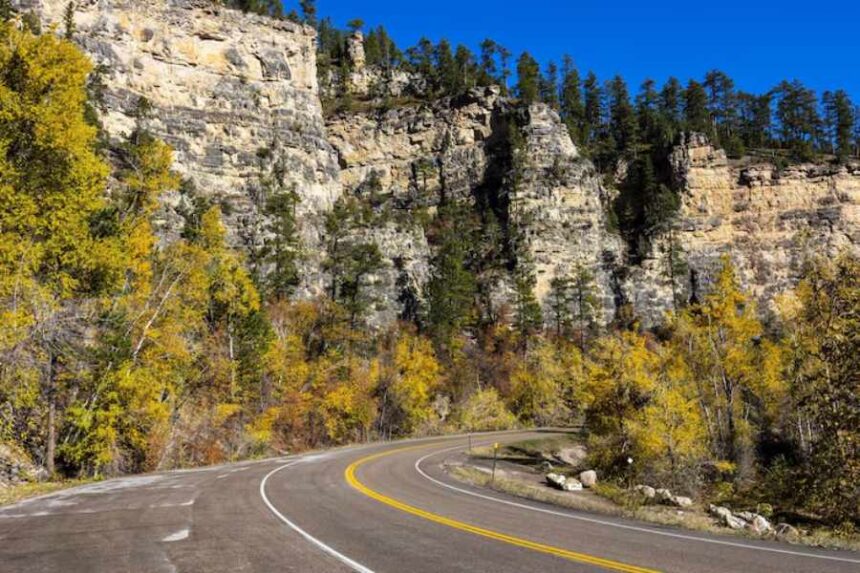If you’re planning to drive through Montana, or already live there, you’re probably expecting wide-open highways, incredible views, and not much traffic. And you’d be right. Driving here can feel like freedom on four wheels. It’s the kind of place where you roll down the windows, turn up the music, and just go.
Montana’s roads may be beautiful, but they’re not always easy. The weather can turn suddenly, animals often cross without warning, and help might be far away if something goes wrong.
This article will take you through what it’s really like to drive across the Big Sky state. What to look forward to, what to watch out for, and what to do if things go sideways.
Scenery That Doesn’t Quit
Montana has some of the most scenic highways in the country. Whether you’re heading toward Glacier National Park or driving the Beartooth Highway, the views are unforgettable. One moment you’re surrounded by open plains, and the next you’re winding through mountains that stretch toward the clouds.
Going-to-the-Sun Road and Beyond
The Going-to-the-Sun Road cuts through Glacier National Park and offers views of forests, lakes, and rugged peaks. The road itself clings to the mountainside, narrow and curvy, but absolutely worth it. Further south, the Beartooth Highway climbs to nearly 11,000 feet. You’ll pass alpine lakes, snowdrifts in midsummer, and sharp switchbacks that test your attention and your brakes.
Even the more ordinary roads, like U.S. Route 2 or Highway 93, offer moments that stop you in your tracks. You’ll see deer grazing in open fields, lone silos on the horizon, and rivers that look like they’ve been there for a thousand years. These aren’t just roads, they’re part of the experience.
The Risks Behind the Beauty
While the scenery might be calming, driving in Montana is rarely simple. People who visit often underestimate how unpredictable things can get.
Long Distances and No Backup
The state is huge, and towns are far apart. You can drive for hours without passing a gas station. If your car breaks down, and there’s no cell signal, which is common, you could be waiting a long time for help.
You might not think about it when everything’s going fine, but when a tire goes flat in the middle of nowhere and there’s snow starting to fall, it becomes very real.
Animals on the Road
Wildlife is part of life here. But on the road, it’s a hazard. Deer are everywhere, especially near dawn and dusk. Elk and moose are bigger and harder to see until they’re right in front of you.
A collision with a deer can cause serious damage. A moose? That can be life-threatening. Even experienced local drivers hit animals every year. It’s not always avoidable.
Weather That Doesn’t Wait
The weather can turn fast. In the same afternoon, you might hit sunshine, fog, rain, and snow. In the winter, black ice is a major problem. In the spring and fall, wind gusts and fast-moving storms can knock visibility to almost nothing.
Tourists often get caught off guard, especially if they’re used to short city commutes. Montana demands your attention behind the wheel, even on the clearest days.
What Happens If You Crash
As much as no one wants to think about it, car accidents do happen, and when they do, they can be complicated.
How Montana Handles Fault
Montana follows a “fault” system when it comes to car accidents. That means the person who caused the crash (or their insurance) is responsible for covering the damage. In a simple fender bender, that’s usually pretty easy to sort out.
But in more serious accidents, especially those involving wildlife, icy roads, or unclear circumstances, figuring out who’s at fault isn’t always straightforward. Maybe you swerved to avoid a deer and ended up in a ditch. Maybe the other driver says you were speeding. It often turns into a back-and-forth between insurance companies, and that can drag on.
When Legal Help Becomes Necessary
If there are injuries, lost wages, or big medical bills involved, things get even trickier. People often bring in a car accident lawyer from Montana when the damage is serious, or when the insurance company doesn’t seem to be playing fair.
That’s especially true when out-of-state visitors are involved. Navigating another state’s insurance rules is tough enough without the stress of recovering from an accident. Local lawyers understand the roads, the courts, and the insurance systems better than someone trying to figure it out from another time zone.
And it’s not just about lawsuits. A lawyer can help you get your car fixed, manage paperwork, and deal with adjusters—all the unglamorous parts of recovering from a crash that still matter a lot.
Smart Moves for a Safer Trip
While some things are out of your control, a lot isn’t. Being prepared makes a big difference.
- Know your route before you go. Don’t rely only on your phone. Cell service is unreliable in remote areas. Download offline maps or bring a printed one, especially if you’re headed into the mountains.
- Keep an emergency kit in the car. Pack water, snacks, a warm blanket, a flashlight, jumper cables, a basic first aid kit, and a phone charger that works without a power outlet. A breakdown can leave you stranded for a while.
- Fuel up often. Don’t assume there will be another gas station just down the road. In some stretches, there might not be one for 50 miles or more.
- Watch for wildlife. If you see a deer warning sign, take it seriously. Slow down, especially around dawn and dusk. Use high beams when possible to spot animals early, but dim them if there’s oncoming traffic.
- Drive for the conditions. If it’s icy, snowing, or windy, slow down. Don’t try to match the speed limit just because it’s posted. Go at a pace that feels safe.
- Check your rental car coverage. If you’re visiting, find out if your rental agreement includes roadside assistance, towing, or protection for wildlife collisions. Don’t assume it does.
Being ready for the unexpected doesn’t just make the drive safer, it makes it a whole lot less stressful.
Final Thoughts
These roads offer something rare: a real sense of escape. You’re not just passing through, you’re part of the landscape. But that freedom comes with responsibility.
Driving here means staying sharp, staying ready, and knowing what to do if something goes wrong. With the right mindset and a little planning, you’ll get to enjoy the best of Montana’s beauty while avoiding the worst of its surprises.
So take the trip. See the mountains. Let the open road clear your head. But respect what the road can throw at you. That’s the real key to a great drive in Big Sky Country.




